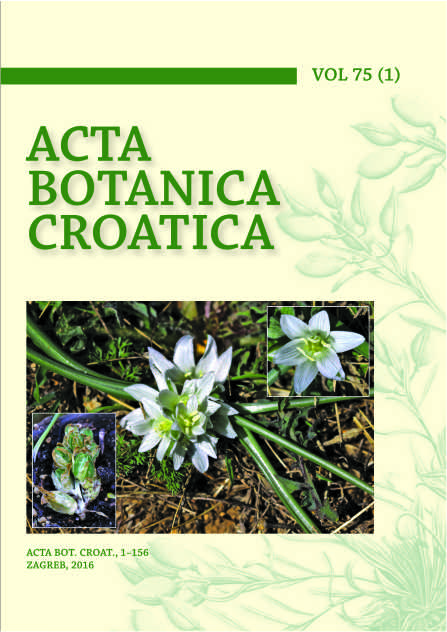Main Article Content
Abstract
Four populations of Betonica bulgarica Degen et Neic. at Sinite Kamani Natural Park were morphologically tested. Intrapopulation and interpopulation variabilities were established. The relationship between morphological variability, number, area and ecological appurtenance of the studied populations were explored. The results demonstrated that the main source of phenotype variation is intrapopulation variability, mainly due to the age structure of populations. The most variable traits are height of stem and dimensions of leaves. The registered interpopulation variability was affected by the differences in altitude, soil type and differences in environmental conditions and soil properties. Indumentum and morphology of generative organs had taxonomic significance for distinguishing B. bulgarica from the other species in the genus, including the species that were morphologically most similar to it – Betonica officinalis L.
Keywords
Article Details
Acta Botanica Croatica is an Open Access journal with minimal restrictions regarding content reuse. Immediately after publishing, all content becomes freely available to anyone for unlimited use and distribution, under the sole condition that the author(s) and the original source are properly attributed according to the Creative Commons Attribution 4.0 International License (CC BY 4.0).
CC BY 4.0 represents the highest level of Open Access, which maximizes dissemination of scholarly work and protects the rights of its authors. In Acta Botanica Croatica, authors hold the copyright of their work and retain unrestricted publishing rights.
By approving final Proof the authors grant to the publisher exclusive license to publish their article in print and on-line, in accordance with the Creative Commons Attribution (CC-BY-4.0) license.

